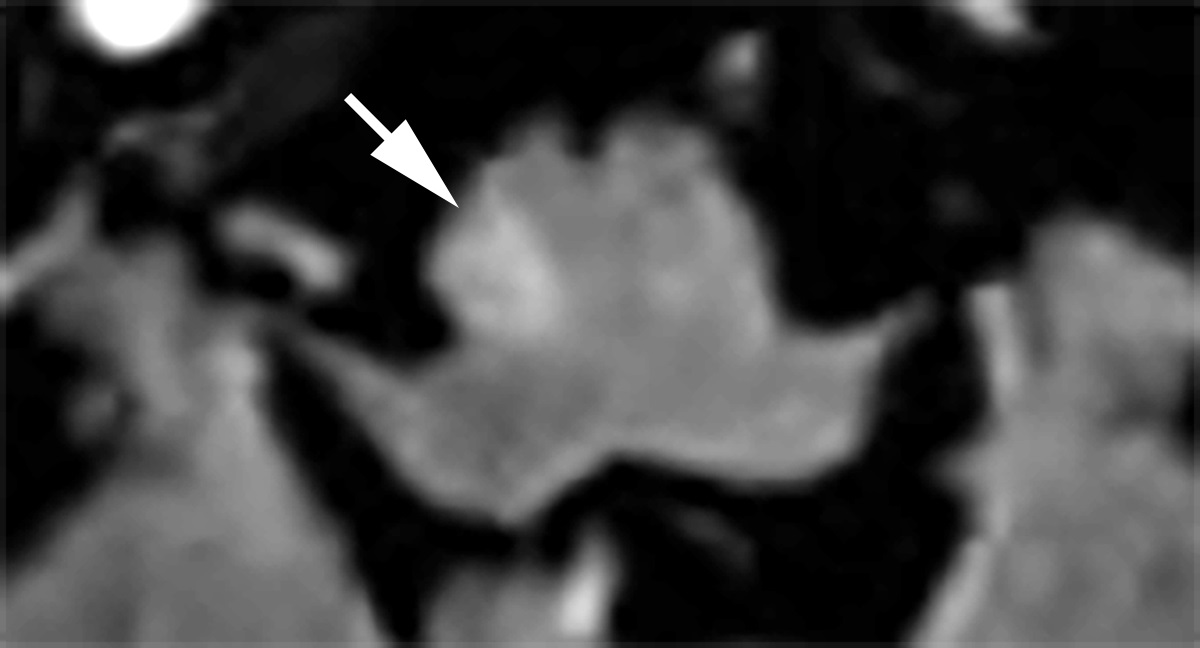Acquired Binocular Pendular Nystagmus
- Pendular nystagmus associated with a brainstem or diencephalic lesion
- Common causes: multiple sclerosis, brainstem/cerebellar tumor, stroke, hemorrhage, inflammation
- Uncommon causes: neurodegenerative states, Pelizaeus-Merzbacher disease, Whipple disease, chiasmal or thalamo-mesencephalic lesion, albinism
-
Core clinical features
- Patient often reports blurred vision or that objects appear to be oscillating (“oscillopsia”)
- Pendular nystagmus of both eyes with a purely torsional trajectory or a mixed horizontal/vertical/torsional trajectory
- Eyes appear to oscillate in a elliptical or circular trajectory (“multivector nystagmus,” “egg beater nystagmus”)
- Oscillation amplitude is often greater in one eye than in the other eye
-
Possible accompanying clinical features
- Ataxia
- Skew deviation
- Saccadic pursuit
- Extremity weakness
- In a variant called Seesaw Nystagmus, one eye moves upward and intorts while the other eye moves downward and extorts
- In a variant called Oculopalatal Tremor, the eyes move in synchrony with pendular oscillations of the palate, platysma, pharynx, larynx, or diaphragm
- In a variant called Oculomasticatory Myorhythmia, the eyes converge synchronously with masticator muscle spasms, usually a sign of Whipple disease
- Infantile motor nystagmus
- Infantile sensory nystagmus
- Monocular pendular nystagmus of childhood
- Gaze-evoked horizontal (“sidebeat”), upbeat, or downbeat nystagmus
- Ocular flutter/ opsoclonus
- Ocular dysmetria
- Square wave jerks
- If you detect a seesaw trajectory, look for a diencephalic (including chiasmal) lesion and albinism
- If you see synchronous palatal movements, look for high T2/FLAIR signal in the inferior olivary nucleus on MRI, which is a central nervous system adaptation to a chronic brainstem lesion
- If you see convergence oscillations and associated jaw muscle tightening, try to say “oculomasticatory myorhythmia” and evaluate the patient for Whipple disease

- Nystagmus may lessen or disappear if the underlying lesion is successfully treated
- Gabapentin or memantine may improve oscillopsia, but side effects are common
- Seesaw nystagmus variant may be helped by baclofen, clonazepam
-
Trap: intramuscular and retrobulbar botulinum toxin injections do not reduce oscillopsia or improve vision
-
Trap: large extraocular muscle recessions do not reduce oscillopsia or improve vision